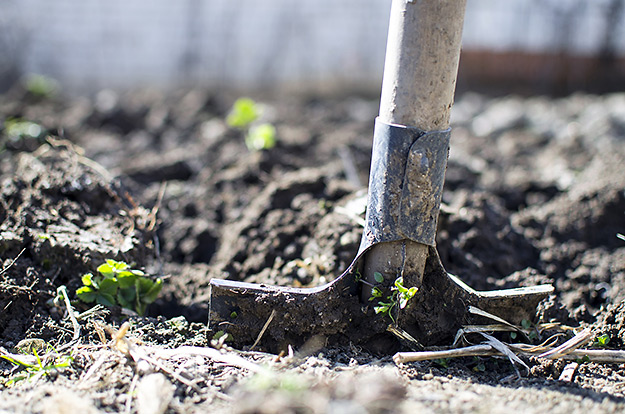
It’s amazing what a few warm days in early spring will do to gardeners yearning to garden. In fishing parlance, it’s akin to a feeding frenzy. Gardeners all across Wyoming are working in their yards, cleaning the flower beds, and preparing the ground for veggies, flowers, trees, and shrubs and anything else that can be planted in the soil. So let’s have a chat about Wyoming soils.
First off, whether you live in Vermont or Wyoming, soil is made up of only sand, silt and clay. Rocks are rocks, not soil; organic matter from plant debris is just plant debris. Most gardeners dream of a sandy, loamy soil, the kind of soil that drains well, holds moisture, is easy to work, and is very productive. Sorry to burst the bubble, but most Wyoming soils are either fast draining sand or heavy clay that holds on to water for long periods. Some gardeners have a mix of sand and clay, the equivalent of concrete when it’s dry. Only a jack-hammer is capable of breaking this soil up.
So what’s a Wyoming gardener to do? Realize the fact that you are blessed with the soil you have–it will always be sand or clay but what you can change is the organic content within the soil. By adding plant debris, whether thru compost, grass turned into manure by cows, or commercial organic products, organic matter can change the way your soils behave. Adding organic matter is a magical elixir to your soil. It camouflages sandy and clay soils, making you think it’s a sandy loamy soil.
Here’s how it works. Organic matter has huge pore spaces. So incorporating it into sand provides an opportunity for it to soak up moisture and retain it for much longer than without it. Conversely, organic matter in clay soils allows for better oxygen and water transport. Further, organic matter as it breaks down provides nutrients and food to soil microbes and your plants, making for a healthy soil system.
I’m convinced that most county fair blue ribbon winners don’t know more than you and I about growing plants, but what they do better than anyone else is their almost religious attitude about adding organic matter into their soil. It’s that important.
I suspect over ninety percent of Wyoming soils are considered alkaline. This is a scientific term that means the soil pH is above 7. The pH scale runs between 0-14, with 7 being neutral and anything below 7 is acidic. Most Wyoming soils have a pH around 8 while most Vermont soils have a pH around 5. That may not sound like a large distance to cover but in reality it’s huge, like changing an ocean of salt water into drinking water—nearly impossible to do. My take home message is live with your soil’s pH.
Gardening shows on TV are abundant. Never take to heart any soil amending tips from eastern gardeners. A common practice for Vermont gardeners is to add ash from the fireplace to the garden. With a pH of around 11 it helps to raise the pH there; in Wyoming adding a lot of wood ash to your garden could in fact sterilize the soil by raising the pH too high.
Certain essential elements like iron and zinc are plentiful in Wyoming soils but because of our alkaline conditions these elements get bound-up and are not readily available for plants to use. Hence, plant leaves turn yellow as a result of iron and zinc deficiencies. Usually iron and zinc need foliar applications to growing plants, because our soil’s pH binds up applications to soil.
This article appeared in the March 28th, 2017 edition of the Wyoming Plant Company News sent to subscribers. You can subscribe to the newsletter to get these articles in your inbox by using the form on the sidebar.
